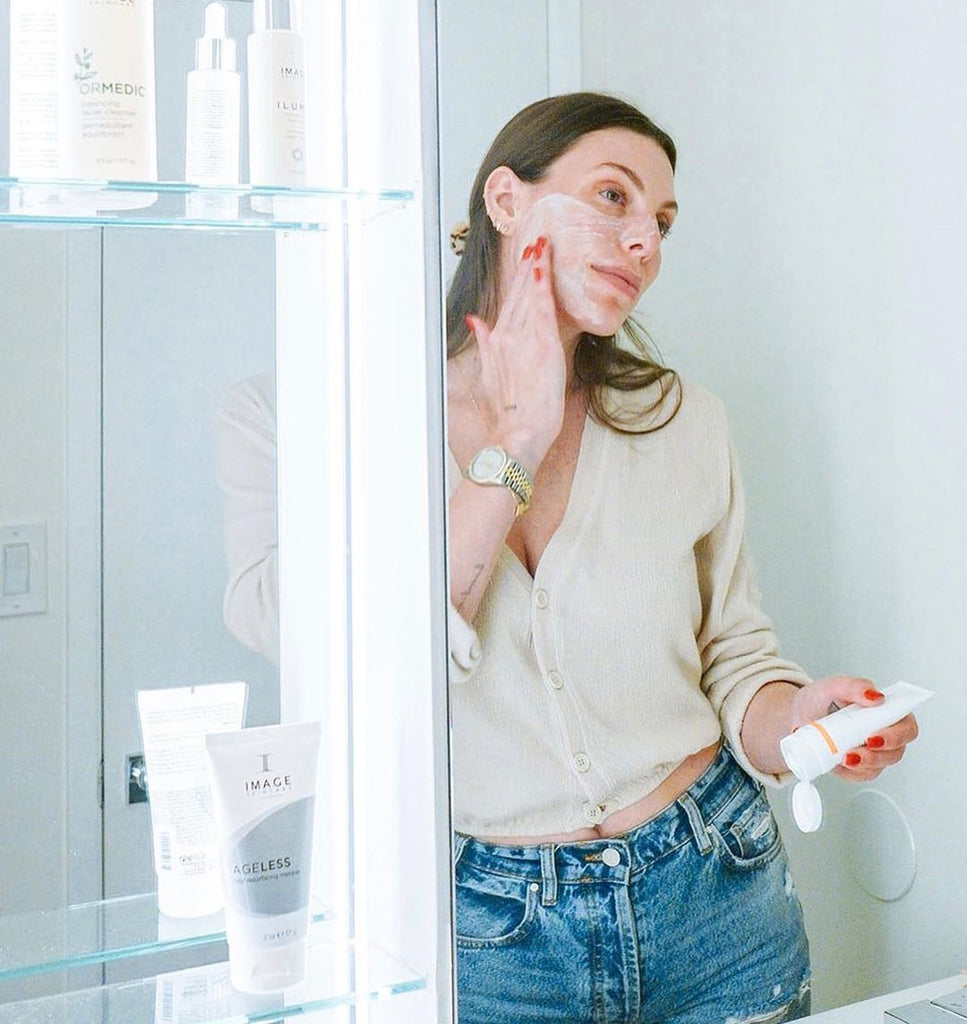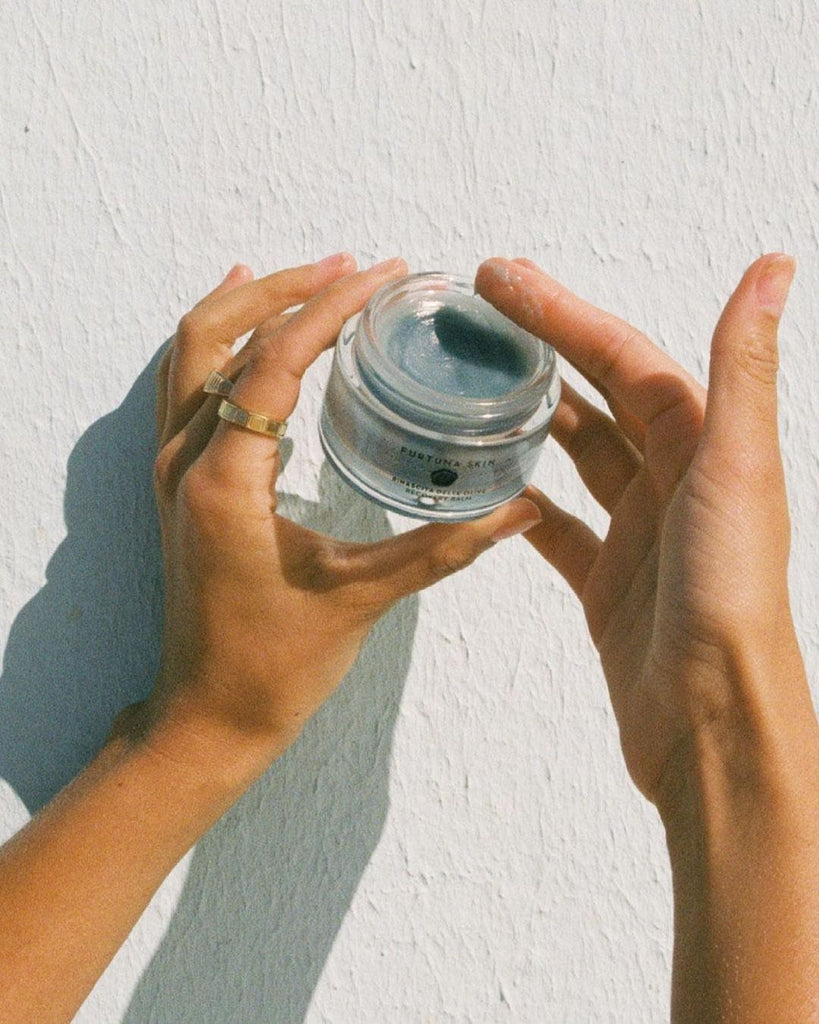Most of us would never have imagined conducting a doctor's visit over video chat just a few months ago, but telemedicine has been rising in popularity and has become an essential service for many patients with few options during the coronavirus pandemic.
Dermatologists, in particular, are seeing an increased demand for virtual consultations in recent months, especially as in-person appointments are limited to emergencies only.
"Dermatologists have been using some forms of telemedicine for a long time, but it has increased exponentially in the coronavirus era. Virtual visits are a particularly good option because they keep you safe at home while still getting excellent care," Dr. Amelia K. Hausauer, director of dermatology at plastic surgery and dermatology practice Aesthetx and ALASTIN Skincare partner, told TODAY Style.
Virtual dermatology appointments could be part of our "new normal" for the foreseeable future, so TODAY reached out to skin care experts to break down everything you need to know about this emerging medical trend.
WHAT IS SKIN CARE TELEMEDICINE?
Like other virtual medical services, skin care telemedicine gives you the opportunity to meet with a dermatologist (or sometimes an aesthetician) without ever visiting an office.
"Historically, telemedicine is the use of virtual platforms, leveraging secure medical video websites to have an appointment with your doctor. More recently, this now includes FaceTime, Skype and Zoom as the government is allowing any private video platform that makes communication easy in the COVID-19 era," Hausauer said.
According to Dr. Angela J. Lamb, medical director of the Patient Access Center, Mount Sinai Doctors Faculty Practice, skin care telemedicine is broken down into two categories:
- Asynchronous: Patients take photos and upload to a platform that goes to a physician, who then they look at it and give you recommendations.
- Synchronous: Patients show a dermatologist their skin during a video consultation.
"Sometimes it is a hybrid appointment where you take the photos in advance in preparation for your visit. This is often very helpful because the video quality can be less consistent than the photo quality," Lamb said.
WHAT TO EXPECT AT A TELEMEDICINE SKIN CARE APPOINTMENT
Similar to an in-office skin care checkup, telemedicine appointments address a range of patient questions, concerns and skin care goals. Since most of us are accustomed to office visits, part of a dermatologist's job in telemedicine is making the transition to a virtual appointment as seamless as possible.
"I always make it a point to try to develop a personal connection with my patients. It is more difficult via video conferencing, but it can be done and helps the remainder of the exam go smoothly," said Dr. Alissa T. Lamoureux, who recently authored an e-book on telehealth with Lumenis.
From there, it's mostly business as usual, with the patient and dermatologist discussing the patient's skin care routine, any skin issues they might be dealing with (acne, rosacea, etc.) and their health history. During a video consultation, dermatologists examine a patient's skin as they would in person, looking for areas of concern like acne spots, melasma pigmentation, oiliness and more.
"Because many of us are at home now, we can even look at the products in our bathroom and discuss how they may or may not be part of a high-impact, individually tailored skin care routine," Hausauer said.
Depending on a patient's needs, dermatologists might recommend a skin care regimen to address concerns, such as acne or eczema, and they sometimes prescribe medications when applicable. In some cases, a patient and dermatologist might also set up a virtual or in-person follow up appointment.
HOW TO PREPARE FOR A VIRTUAL APPOINTMENT
If you're about to take part in your first virtual chat with a dermatologist, there are a few things you can do to prepare:
- Send photos of your skin beforehand: "To begin a virtual consultation I always require clear, makeup-free, well-lit, no-filter photos. This allows me to visualize the client's skin, see what we're working with and truly understand their skin concerns," celebrity aesthetician Candace Marino said.
- Know what you want to get out of the appointment: "Most clients know exactly what they are looking for before calling me, so they are prepared to discuss a pesky concern that has been bugging them for a while. From the conversation, things will organically pop up where I can correlate a skin condition to something in their lifestyle or products that may be exacerbating it," Marino said.
- Use the right device: "We recommend a smart phone or tablet because the camera is typically higher resolution than a laptop and it is easier to work the camera into a position in which I can clearly see the concern," Lamoureux said. "It is much more difficult to hold a laptop in the correct position or even get it in the correct position."
- Find a quiet spot: "The single most critical thing to do for a virtual appointment is to find a private, quiet area with good cell phone or computer service. It is important to make sure the line of communication is strong as it helps the appointment run smoothly," Hausauer said.
WHAT ARE THE PROS AND CONS OF SKIN CARE TELEMEDICINE?
At a time when we're all trying to minimize trips out of the house, video chatting with a dermatologist is a pretty convenient option. Connecting virtually can also save patients from sitting in a waiting room for what can sometimes seem like forever.
Virtual skin care appointments are perfect for addressing a range of skin care concerns, including the following:
- Routine skin issues like acne, rashes, dryness, etc.
- Specialized care for skin conditions like rosacea, psoriasis and eczema
- Cosmetic consultations on concerns such as melasma, sun spots, wrinkles, acne scars and more
Of course, virtual skin care appointments are most effective when used in conjunction with in-person appointments.
"In dermatology, there will always be a need for in-person appointments, as many conditions require a hands-on approach to diagnosis and treatment. Not everything is a good fit for videoconferencing," Lamoureux said.
And there are still some skin concerns that lend themselves to an in-office appointment, like a surgical procedures or full body skin checkups.
"It is difficult to do full skin checks because dermatologists like to look very closely at the pattern of your moles and bumps. However, high quality, good resolution photographs sent directly to your doctor are a way to ask questions about a specific spot. Then, your dermatologist can determine if it is benign (harmless), worrisome or needs a closer in-person check," Hausauer said.
Most of us are understandably avoiding unnecessary trips to medical offices right now, but the dermatologists TODAY spoke to wanted to reassure patients that some skin care issues should always be treated in person.
"You should not wait for a virtual consultation for any rapidly worsening conditions. For instance, if you have hives with throat swelling and difficulty breathing or a quickly spreading infections, you should go to urgent care or the emergency room," Hausauer said.
IS TELEMEDICINE HERE TO STAY?
Virtual dermatology appointments are helping many patients stay connected to their dermatologists during the coronavirus pandemic, but is telemedicine a passing fad or is it here to stay?
"I think virtual is here to stay. The scope of how we will use it in the future may change, but in a growing technological age, I think medicine won’t be going backward. These visits are convenient for you and providers, but still allow meaningful face-to-face contact," Hausauer said.
Moving forward, many dermatologists expect that telemedicine will support, rather than replace, traditional in-person provider care.
"I think that this pandemic is teaching all of us in the health care and beauty industry that we need to be flexible and creative in the ways we serve our clientele, and I do think that social distancing will remain a thing, even after the bans are lifted. I do anticipate it taking a while for things to go back to the normal we once knew," Marino said.
This article was originally published on today.com.



